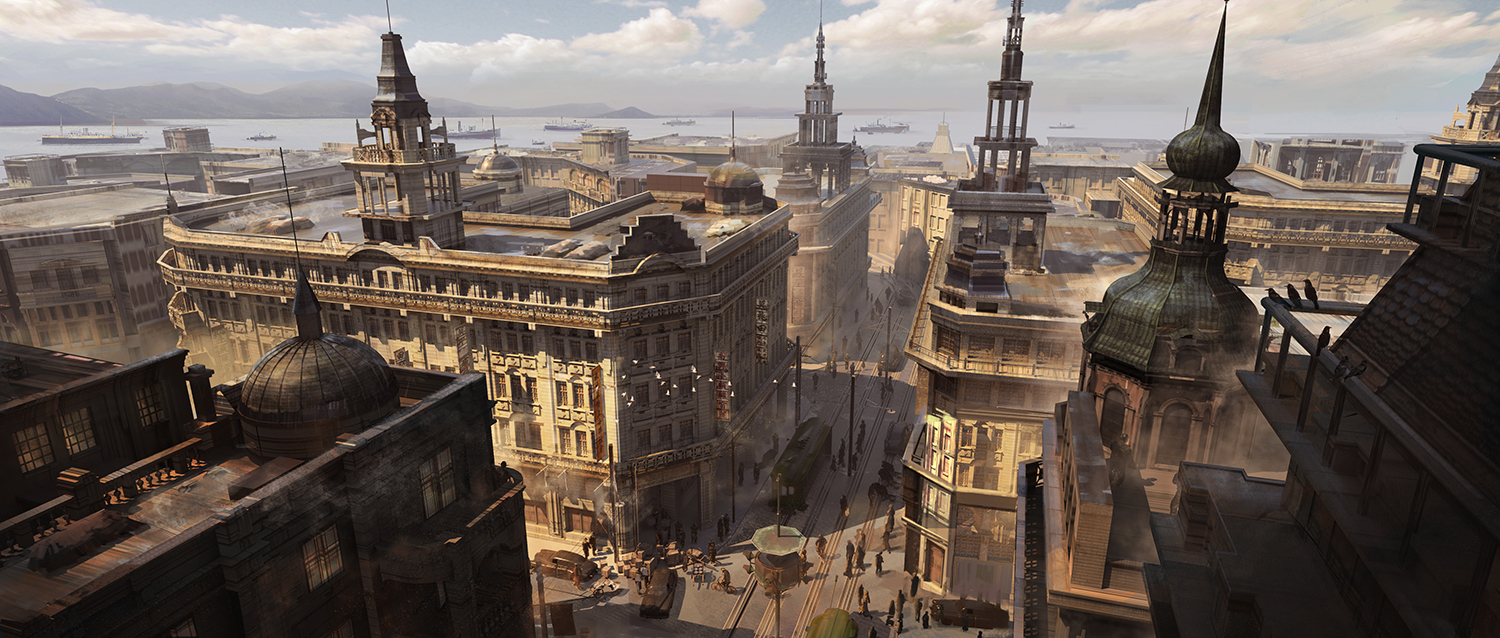Bringing History to Life
By Feng Zhu
BUILDING AN INDUSTRY RELEVANT PORTFOLIO AS A JUNIOR DESIGNER
The job market for concept design has changed dramatically in the past 10 years, especially in the games industry. As more and more highly skilled artists flood the scene, jobs are becoming highly competitive. If you are a student, it might seem overwhelming and hopeless when browsing through the thousands of amazing works on ArtStation. You’ll probably ask yourself, “do I even have a chance out there?” If you know what studios are looking for and build a portfolio to match, then the answer is a definite "yes."
As a student, your first job is going to be an entry level designer. At this stage, your day to day tasks are to assist senior designers. This means drawing lots of props, doing orthographic turnarounds, defining details, making reference sheets, breaking down designs into ¾ views, set dressing empty rooms and creating tons and tons of variations (armor, hair, weapons, vehicles, etc.). This might sound a bit boring, but it is the reality of the job for a junior designer. Once you have a few titles under your belt (3-5 years), you’ll naturally move up the development chain and take on more “world building” roles as a senior designer. New junior designers will be hired to assist you - and thus the cycle continues.
Knowing this fact, you’ll need to prepare the right portfolio to meet the job demands. Take a look at your work and ask yourself the following questions:
- Do you only have high-fantasy, post-apocalyptic and military sci-fi designs?
- Do you only have production paintings of exterior environments shot from miles away?
- Do you lack historic and real-world environments and costumes?
- Do you lack pieces that required a lot of real world references and grounded proportions?
- Does your portfolio look like “fan-art” of other concept artists?
If your answer is “yes” for everything, then most likely your portfolio is trying too hard to be a senior designer’s portfolio. In most cases, building a portfolio filled with “made-up stuff” is not going to get you very far. Instead, treat this job like any other job. Fill the role of the junior designer first. In essence, you’ll need to do some boring stuff to gain experience before moving on to the “fun” stuff.
One of the best ways to build these types of portfolios is by bringing history back to life. These portfolio pieces will set your work apart and demonstrate a wealth of knowledge. You can refer to my previous blog about this.
Below are examples from my FZD Films internal training course in Beijing. Finding good junior designers with real-world content is especially hard in Asia so we must develop our own training program. Even though these pieces are not as exciting as spaceships and alien worlds, they serve a purpose that many studios need. We are currently updating our curriculum at FZD School of Design to include many of the same processes. By adopting to market demands, we can better help our students to secure their first job.
Narrow streets with older buildings filled with small shops.

Exterior of an antique store.

Many rare items can be found here.

Another antique shop interior.

Shanghai 1930s establishing shot.

Busy streets with trams, people and bicycles.

Office for studying antiques.

An European styled university located on the outskirts of the city.

University campus.

European styled lecture hall.

An art collector's house located along the river.

Medium shot of the same house.

Interior of the house.

1930s Shanghai was a busy place with lots of foreign trade.

New ship arriving with visitors and cargo.

Deep in the cargo hold.

Elsewhere on the docks.

Train stations are also busy transporting goods and people across the city.

The entertainment district of Shanghai. This is the famous Cathay theatre built in 1932 and is still there today.

A light rain blankets the city.

All kinds of new entertainment are being introduced to Shanghai.

The famous Waibaidu Bridge. Today, thousands of tourists cross this bridge daily.

Bar district exterior.

Upstairs above the bar.

A celebrity's home in the same building.

The bar preparing for the busy evening ahead.

Theater district on a rainy night.

A grand theatre.

